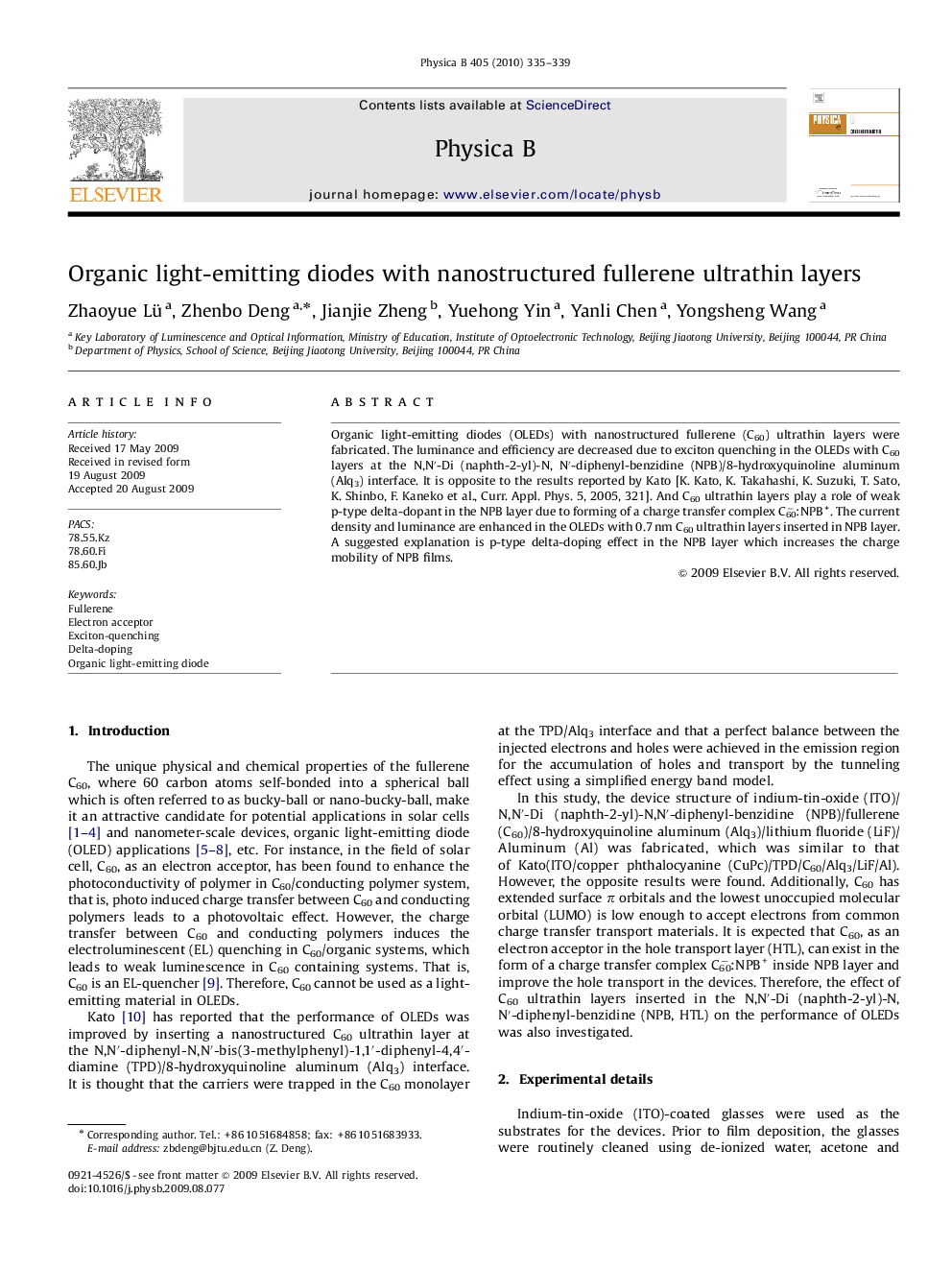| Article ID | Journal | Published Year | Pages | File Type |
|---|---|---|---|---|
| 1813788 | Physica B: Condensed Matter | 2010 | 5 Pages |
Organic light-emitting diodes (OLEDs) with nanostructured fullerene (C60) ultrathin layers were fabricated. The luminance and efficiency are decreased due to exciton quenching in the OLEDs with C60 layers at the N,N′-Di (naphth-2-yl)-N, N′-diphenyl-benzidine (NPB)/8-hydroxyquinoline aluminum (Alq3) interface. It is opposite to the results reported by Kato [K. Kato, K. Takahashi, K. Suzuki, T. Sato, K. Shinbo, F. Kaneko et al., Curr. Appl. Phys. 5, 2005, 321]. And C60 ultrathin layers play a role of weak p-type delta-dopant in the NPB layer due to forming of a charge transfer complex C60−:NPB+. The current density and luminance are enhanced in the OLEDs with 0.7 nm C60 ultrathin layers inserted in NPB layer. A suggested explanation is p-type delta-doping effect in the NPB layer which increases the charge mobility of NPB films.
